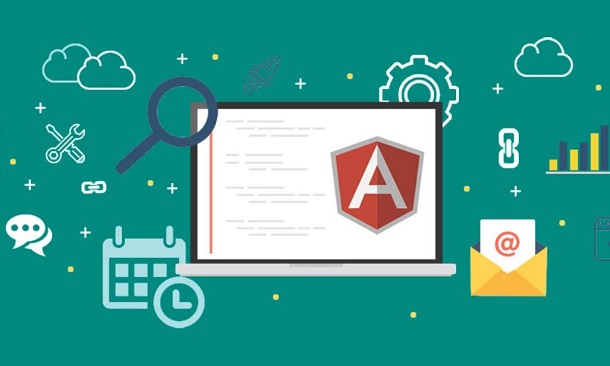Securing AngularJS Applications: A Comprehensive Guide

Introduction
In the realm of web development, AngularJS has emerged as a powerful and popular framework for building dynamic, single-page web applications. However, as the digital landscape evolves, so do the threats to web applications. Security is a paramount concern for developers, and in this article, we will delve into the intricacies of AngularJS security, exploring best practices and tools to fortify your applications. Additionally, we will shed light on a cutting-edge security solution called AppSealing.
I. Understanding AngularJS Security
AngularJS, developed by Google, is a JavaScript-based open-source front-end web application framework. It simplifies the development of dynamic, single-page applications by providing a modular and well-structured architecture. However, the flexibility and power that Angularjs security offers also bring security challenges that developers must address.
II. Common Security Threats in AngularJS
- Cross-Site Scripting: XSS attacks involve injecting malicious scripts into a web application, often through user input. AngularJS mitigates XSS by employing contextual escaping and sanitization, but developers must be diligent in implementing these features correctly.
- Cross-Site Request Forgery: CSRF attacks trick users into performing actions they did not intend. AngularJS protects against CSRF by generating unique tokens for each session, but developers need to ensure proper token usage.
- Data Binding Issues: AngularJS’s two-way data binding can be vulnerable to security threats if not managed correctly. Developers should be cautious about binding user input directly to the model without proper validation and sanitation.
III. Best Practices for AngularJS Security
- Contextual Escaping and Sanitization
AngularJS provides mechanisms for escaping and sanitizing user-generated content. Developers should use the ng-bind-html directive and the $sanitize service to prevent XSS attacks by sanitizing user inputs.
- Strict Content Security Policy
Implementing a strict CSP helps mitigate various security risks, including XSS attacks. A well-configured CSP restricts the sources from which scripts can be executed, reducing the attack surface.
- Use of HTTPS
Always serve AngularJS applications over HTTPS to ensure data integrity and confidentiality. Secure connections protect against man-in-the-middle attacks and unauthorized data interception.
- Input Validation and Sanitization
Validate and sanitize all user inputs to prevent malicious data from reaching the application. This is crucial for protecting against various injection attacks, including SQL injection and command injection.
- Anti-CSRF Protection
AngularJS provides built-in protection against CSRF attacks through the use of tokens. Developers should ensure that these tokens are correctly generated, validated, and associated with user sessions.
IV. Introducing AppSealing for AngularJS Security
AppSealing is a cutting-edge security solution designed to enhance the protection of mobile applications, including those built with AngularJS. While AngularJS addresses many security concerns on the client side, AppSealing focuses on securing the entire application, including the backend and client-server communication.
V. Key Features of AppSealing
- Code Obfuscation
AppSealing employs advanced code obfuscation techniques to make it challenging for attackers to reverse engineer and understand the application’s logic. This helps protect intellectual property and sensitive algorithms.
- Tamper Detection
AppSealing includes tamper detection mechanisms that can identify and respond to unauthorized modifications to the application code. If tampering is detected, the application can take predefined actions to safeguard user data and maintain the integrity of the software.
- Runtime Application Self-Protection
RASP capabilities in AppSealing allow the application to monitor its behavior in real-time. It can detect and respond to security threats dynamically, providing an additional layer of defense against attacks.
4. Secure Communication
AppSealing secures communication channels between the AngularJS application and the server by implementing strong encryption and ensuring data integrity. This protects sensitive user information during transit.
5. Rooted Device Detection
To prevent attacks on compromised devices, AppSealing includes rooted device detection mechanisms. If the application is running on a rooted or jailbroken device, it can take precautionary measures to protect user data.
VI. How AppSealing Complements AngularJS Security
While AngularJS primarily focuses on client-side security, AppSealing extends the security measures to the entire application stack. By providing robust protection against code tampering, reverse engineering, and runtime attacks, AppSealing enhances the overall security posture of AngularJS applications.
- The Evolving Threat Landscape: Staying Ahead
In the fast-paced world of technology, the threat landscape is dynamic and ever-evolving. As developers fortify their applications against known vulnerabilities, cyber adversaries continually adapt and devise new attack vectors. One critical aspect of AngularJS security is staying informed about emerging threats and vulnerabilities.
- Continuous Security Audits and Updates
Regular security audits are imperative to identify and address potential vulnerabilities in an AngularJS application. Developers should stay abreast of security advisories and updates from the AngularJS community. By promptly applying security patches and updates, developers can ensure that their applications are equipped with the latest defenses against emerging threats.
3. Security Training and Awareness
The human factor remains a significant element in cybersecurity. Educating developers and the broader team about secure coding practices and the latest security threats is crucial. Building a security-conscious culture ensures that everyone involved in the development process understands their role in maintaining the integrity and security of the application.
VII. Beyond AngularJS: Securing the Backend
While AngularJS focuses on client-side security, the backend of an application is equally susceptible to attacks. Developers must implement robust security measures to safeguard sensitive data, secure APIs, and protect against server-side vulnerabilities. Utilizing frameworks and tools designed for backend security, such as Express.js for Node.js applications, is essential to create a holistic security strategy.
VIII. The Role of Authentication and Authorization in AngularJS Security
Authentication and authorization are fundamental components of web application security. Ensuring that users are who they claim to be and granting them the appropriate level of access is crucial. AngularJS provides mechanisms for implementing secure authentication, such as token-based authentication using JSON Web Tokens (JWT).
- Token-Based Authentication
AngularJS applications often implement token-based authentication to verify the identity of users. When a user logs in, the server generates a JWT containing information about the user and their roles. This token is then securely stored on the client side. With each subsequent request, the token is sent to the server, allowing it to verify the user’s identity and permissions.
- Authorization Guards
AngularJS uses guards to control access to certain routes based on the user’s authentication status and roles. Implementing authorization guards ensures that only authenticated users with the appropriate permissions can access specific parts of the application. This adds an extra layer of security, preventing unauthorized access to sensitive areas.
- Data Encryption and AngularJS Security
Securing data in transit and at rest is a critical consideration for AngularJS applications. Encryption plays a pivotal role in protecting sensitive information from unauthorized access. Malicious actors. Implementing secure communication protocols, such as HTTPS, encrypts the data during transit, ensuring confidentiality and integrity. AngularJS applications should enforce the use of HTTPS to prevent man-in-the-middle attacks.
Conclusion
As the digital landscape continues to evolve, securing AngularJS applications is of paramount importance. Developers must adopt best practices for mitigating common security threats, and advanced solutions like AppSealing can provide an extra layer of defense against sophisticated attacks. By combining the strengths of AngularJS and innovative security tools, developers can ensure the integrity, confidentiality, and availability of their applications in an ever-changing threat landscape.




